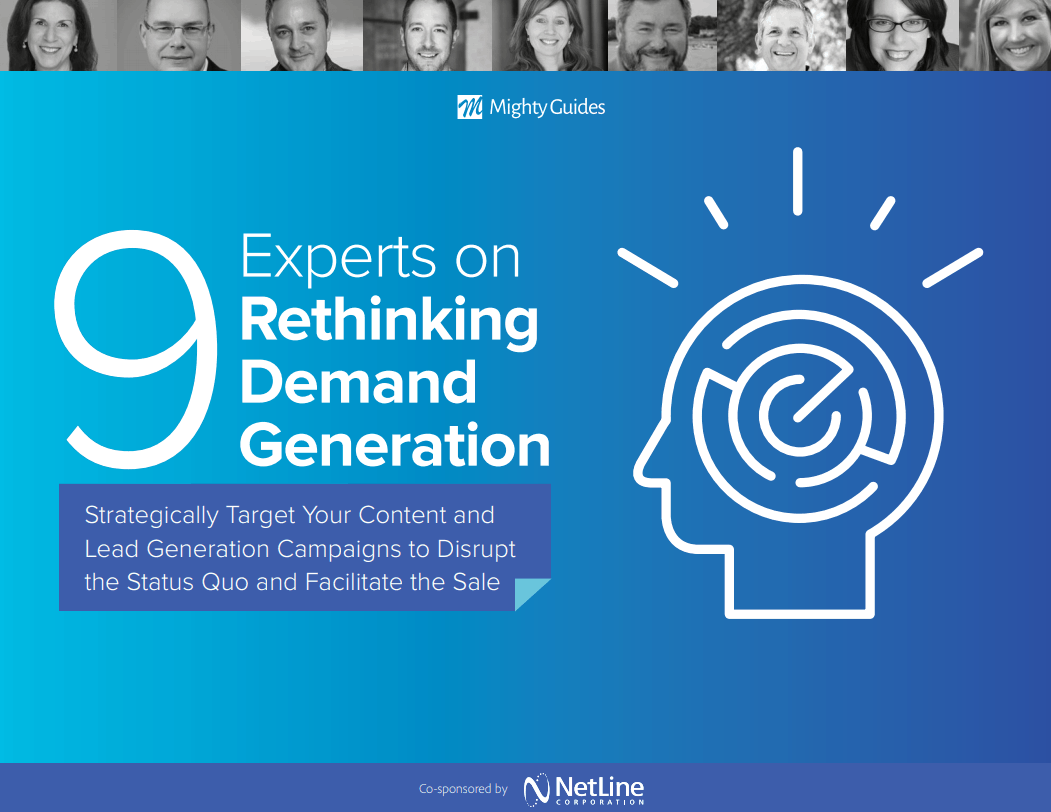
Samantha Stone, Founder and CMO, The Marketing Advisory Network
The Making of a Champion
- In most organizations, the primary purchasing role of C-level executives is signaling that a need exists, and then stepping back so that the team can ask tough questions and develop a business justification.
- Champions work to drive change for the benefit of the company. They’re not necessarily your champion.
- It’s important to recognize that that content most valuable to influencers and champions isn’t the content that will attract a C-level audience.
“The champion is not just someone who likes us. . . . The champion has to be the person who can actually influence the process within his or her own organization.”
Businesses spend a lot of money marketing to the C-Suite. The logic behind this strategy is compelling: It’s relatively easy to identify C-level executives, and in most cases, they have the final sign-off. Why bother going down the ladder if you can go straight to the top?
It’s a nice idea, but the C-Suite strategy has a flaw, as Samantha Stone details in her book Unleash Possible: A Marketing Playbook That Drives Sales—namely, most significant business-to-business buy decisions are collaborative and involve many decision makers and influencers. In most organizations, the primary purchasing role of C-level executives, beyond final sign-off, is to signal, “Yes, I agree with you that that that need exists,” and then step back to allow their teams to evaluate, ask the tough questions, and develop a business justification for the best solution. “When we focus all of our attention on a C-level executive, we’re missing the opportunity to understand how buyers actually use, evaluate, and buy products and services like ours,” Stone explains. “It’s also a complete mismatch for how most C-level executives actually operate.”
Stone believes that an effective demand generation strategy must reach the broader team of decision makers and, more specifically, reveal the champions in that group. The champions are the strongest influencers, the people who see the value of making a change and are willing to persuade others that it’s the right one. “The champion is not just someone who likes us,” says Stone. “The champion has to be the person who can actually influence the process within his or her own organization.” To accomplish these objectives, a demand generation strategy must:
• Target all decision makers and influencers in the buying process. Anyone on the decision team can become the champion during the course of a decision cycle.
• Provide content that enables the champion to rise up, choose you, and make the factual case that persuades others in the group. To do that, the content must provide a compelling argument for change. If the solution has users altering the way they work, the content must also show why making that change is a good thing. Stone says, “When buying decisions that don’t involve a lot of money become stalled it’s often because the solution requires a business or workflow change. Selling that product or service requires helping the champion walk the organization through why we want them to work differently, and they have to believe the benefits far outweigh the effort. Return on investment alone is not always sufficient.”
The content that’s most valuable to influencers and champions isn’t likely to attract a C-level audience. Stone explains, “Most of the time, the C-Suite person is not out there making detailed vendor comparisons. That executive won’t fill out a self-assessment quiz or download an RFP template. The C-Suite is more likely to download vision and thought leadership pieces, but such content is of little use to champions and other decision influencers. As marketers, we need to make both types of assets available to the right people, at the right time. Throwing everything out there and hoping buyers will sort out what they need is a formula for inefficiency and failure.”
By providing insights and stories that help the buying group get on the same page and work towards solving a particular business problem, the champion can unify all of the stakeholders around a particular concept. If you subsequently provide the buying committee with tools to help them work together to make a good decision, your salespeople have a much greater chance of closing the sale.



